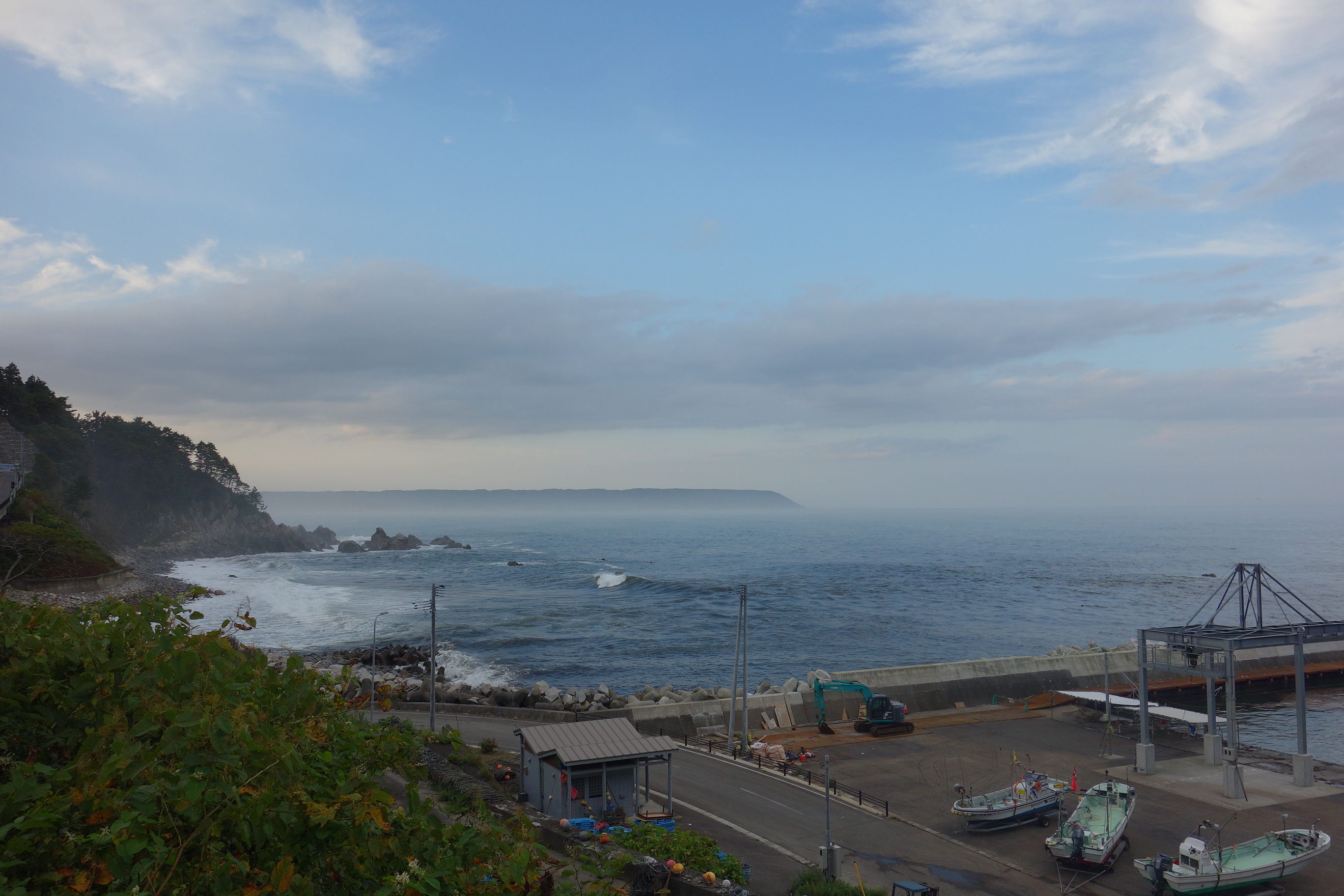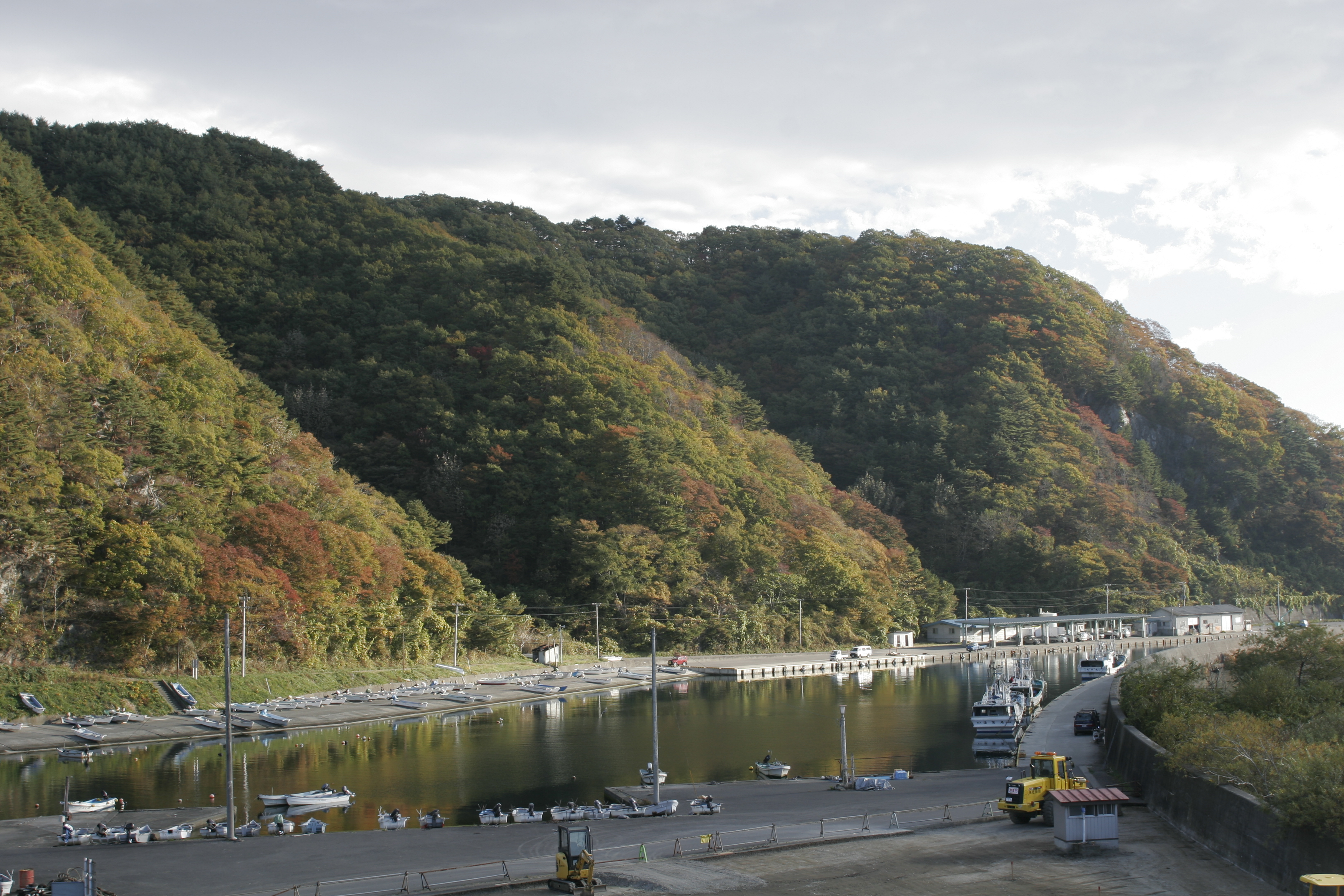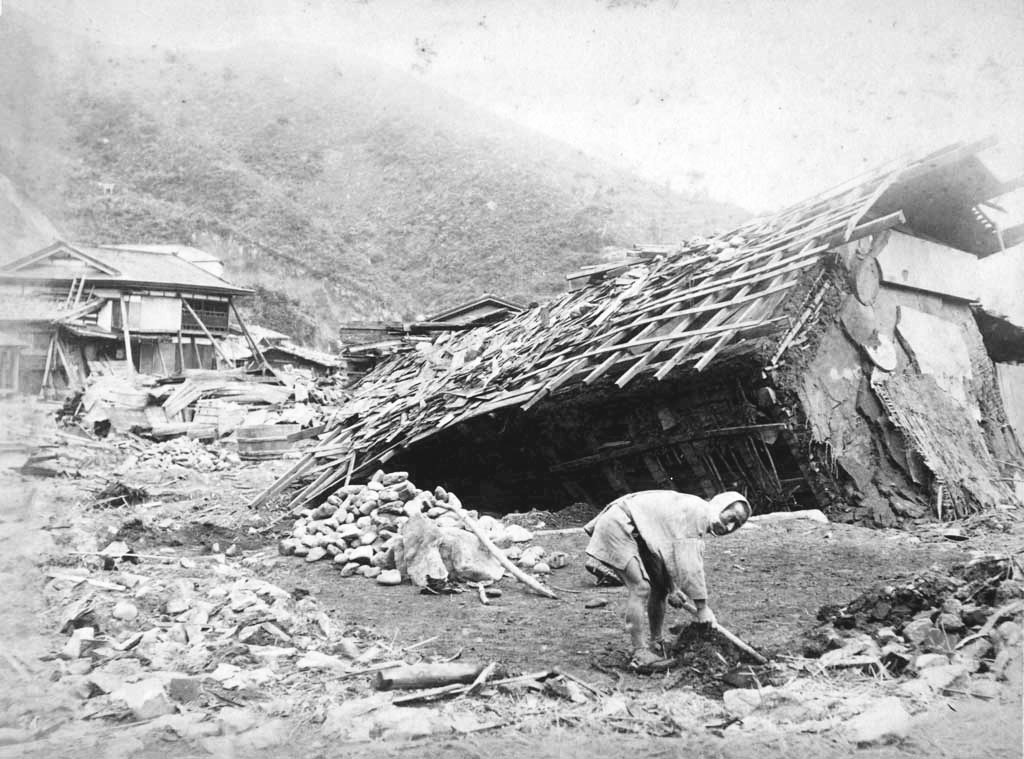|
Noda, Iwate
is a Villages of Japan, village located in Iwate Prefecture, Japan. , the village had an estimated population of 4,201, and a population density of 52 persons per km² in 1660 households. The total area of the village is . Geography Noda is located in far northeastern Iwate Prefecture, bordered by the Pacific Ocean to the east. The western portion of the village is within the Kitakami Mountains. Parts of the coastline of Noda are within the borders of the Sanriku Fukkō National Park. Neighboring municipalities Iwate Prefecture *Kuji, Iwate, Kuji *Iwaizumi, Iwate, Iwaizumi *Fudai, Iwate, Fudai Climate Noda has a cold oceanic climate (Köppen climate classification ''Cfb'') characterized by mild summers and cold winters with heavy snowfall. The average annual temperature in Noda is 8.7 °C. The average annual rainfall is 1273 mm with September as the wettest month and February as the driest month. The temperatures are highest on average in August, at around 21.4 � ... [...More Info...] [...Related Items...] OR: [Wikipedia] [Google] [Baidu] |
Villages Of Japan
A is a local administrative unit in Japan. It is a local public body along with , , and . Geographically, a village's extent is contained within a prefecture. It is larger than an actual settlement, being in actuality a subdivision of a rural , which are subdivided into towns and villages with no overlap and no uncovered area. As a result of mergers and elevation to higher statuses, the number of villages in Japan is decreasing. Currently, 13 prefectures no longer have any villages: Tochigi (since March 20, 2006), Fukui (since March 3, 2006), Ishikawa (since March 1, 2005), Shizuoka (since July 1, 2005), Hyōgo (since April 1, 1999), Mie (since November 1, 2005), Shiga (since January 1, 2005), Hiroshima (since November 5, 2004), Yamaguchi (since March 20, 2006), Ehime (since January 16, 2005), Kagawa (since April 1, 1999), Nagasaki (since October 1, 2005), and Saga (since March 20, 2006). The six villages in the Northern Territories dispute and Atarashiki-mura (w ... [...More Info...] [...Related Items...] OR: [Wikipedia] [Google] [Baidu] |
Iwaizumi, Iwate
is a town located in Iwate Prefecture, Japan. , the town had an estimated population of 8,987, and a population density of 9.1 persons per km² in 4366 households. The total area of the town is . Geography Iwaizumi is in the Kitakami Mountains of northeast Iwate prefecture, east of the prefectural capital of Morioka. It has a small coastline on the Pacific Ocean to the east. The area has numerous limestone caves, including the Ryūsendō. Neighboring municipalities Iwate Prefecture *Morioka *Kuji * Miyako * Fudai * Tanohata * Kuzumaki *Noda Climate Iwaizumi has a humid climate ( Köppen climate classification ''Cfa'') characterized by mild summers and cold winters with heavy snowfall. The average annual temperature in Iwaizumi is 9.5 °C. The average annual rainfall is 1283 mm with September as the wettest month and February as the driest month. The temperatures are highest on average in August, at around 22.3 °C, and lowest in January, at around −2. ... [...More Info...] [...Related Items...] OR: [Wikipedia] [Google] [Baidu] |
1933 Sanriku Earthquake
The occurred on the Sanriku coast of the Tōhoku region of Honshū, Japan on March 2 with a moment magnitude of 8.4. The associated tsunami caused widespread devastation. Earthquake The epicenter was located offshore, east of the city of Kamaishi, Iwate. The main shock occurred at 02:31 AM local time on March 3, 1933 (17:31 UTC March 2, 1933) and measured 8.4 on the moment magnitude scale. It was in approximately the same location as the 1896 Sanriku earthquake and it occurred far enough away from the town that shaking did little damage. Approximately three hours after the main shock there was a magnitude 6.8 aftershock, followed by 76 more aftershocks (with a magnitude of 5.0 or greater) over a period of six months. This was an intraplate event that occurred within the Pacific Plate, and the focal mechanism showed normal faulting. Damage Although little damage was produced from the shock, the tsunami, which was recorded to reach the height of at Ōfunato, Iwate, caus ... [...More Info...] [...Related Items...] OR: [Wikipedia] [Google] [Baidu] |
1896 Sanriku Earthquake
The was one of the most destructive seismic events in Japanese history. The 8.5 magnitude earthquake occurred at 19:32 (local time) on June 15, 1896, approximately off the coast of Iwate Prefecture, Honshu. It resulted in two tsunami waves which destroyed about 9,000 homes and caused at least 22,000 deaths. The waves reached a then-record height of ; this would remain the highest on record until waves from the 2011 Tōhoku earthquake exceeded that height by more than . From the tsunami records the estimated tsunami's magnitude is (Mt = 8.2), much greater than expected for the seismic magnitude estimated from the observed seismic intensity (=7.2). This earthquake is now regarded as being part of a distinct class of seismic events, the tsunami earthquake. Geology The epicenter lies just to the west of the Japan Trench, the surface expression of the west-dipping subduction zone. The trench forms part of the convergent boundary between the Pacific and Eurasian plates. Magnitud ... [...More Info...] [...Related Items...] OR: [Wikipedia] [Google] [Baidu] |
Tsunami
A tsunami ( ; from ja, 津波, lit=harbour wave, ) is a series of waves in a water body caused by the displacement of a large volume of water, generally in an ocean or a large lake. Earthquakes, volcanic eruptions and other underwater explosions (including detonations, landslides, glacier calvings, meteorite impacts and other disturbances) above or below water all have the potential to generate a tsunami. Unlike normal ocean waves, which are generated by wind, or tides, which are in turn generated by the gravitational pull of the Moon and the Sun, a tsunami is generated by the displacement of water from a large event. Tsunami waves do not resemble normal undersea currents or sea waves because their wavelength is far longer. Rather than appearing as a breaking wave, a tsunami may instead initially resemble a rapidly rising tide. For this reason, it is often referred to as a tidal wave, although this usage is not favoured by the scientific community because it might g ... [...More Info...] [...Related Items...] OR: [Wikipedia] [Google] [Baidu] |
Meiji Period
The is an era of Japanese history that extended from October 23, 1868 to July 30, 1912. The Meiji era was the first half of the Empire of Japan, when the Japanese people moved from being an isolated feudal society at risk of colonization by Western powers to the new paradigm of a modern, industrialized nation state and emergent great power, influenced by Western scientific, technological, philosophical, political, legal, and aesthetic ideas. As a result of such wholesale adoption of radically different ideas, the changes to Japan were profound, and affected its social structure, internal politics, economy, military, and foreign relations. The period corresponded to the reign of Emperor Meiji. It was preceded by the Keiō era and was succeeded by the Taishō era, upon the accession of Emperor Taishō. The rapid modernization during the Meiji era was not without its opponents, as the rapid changes to society caused many disaffected traditionalists from the former samurai ... [...More Info...] [...Related Items...] OR: [Wikipedia] [Google] [Baidu] |
Tokugawa Shogunate
The Tokugawa shogunate (, Japanese 徳川幕府 ''Tokugawa bakufu''), also known as the , was the military government of Japan during the Edo period from 1603 to 1868. Nussbaum, Louis-Frédéric. (2005)"''Tokugawa-jidai''"in ''Japan Encyclopedia'', p. 978.Nussbaum"''Edo-jidai''"at p. 167. The Tokugawa shogunate was established by Tokugawa Ieyasu after victory at the Battle of Sekigahara, ending the civil wars of the Sengoku period following the collapse of the Ashikaga shogunate. Ieyasu became the ''shōgun,'' and the Tokugawa clan governed Japan from Edo Castle in the eastern city of Edo (Tokyo) along with the ''daimyō'' lords of the ''samurai'' class.Nussbaum"Tokugawa"at p. 976. The Tokugawa shogunate organized Japanese society under the strict Tokugawa class system and banned most foreigners under the isolationist policies of '' Sakoku'' to promote political stability. The Tokugawa shoguns governed Japan in a feudal system, with each ''daimyō'' administering a '' han'' ... [...More Info...] [...Related Items...] OR: [Wikipedia] [Google] [Baidu] |
Edo Period
The or is the period between 1603 and 1867 in the history of Japan, when Japan was under the rule of the Tokugawa shogunate and the country's 300 regional '' daimyo''. Emerging from the chaos of the Sengoku period, the Edo period was characterized by economic growth, strict social order, isolationist foreign policies, a stable population, perpetual peace, and popular enjoyment of arts and culture. The period derives its name from Edo (now Tokyo), where on March 24, 1603, the shogunate was officially established by Tokugawa Ieyasu. The period came to an end with the Meiji Restoration and the Boshin War, which restored imperial rule to Japan. Consolidation of the shogunate The Edo period or Tokugawa period is the period between 1603 and 1867 in the history of Japan, when Japan was under the rule of the Tokugawa shogunate and the country's regional '' daimyo''. A revolution took place from the time of the Kamakura shogunate, which existed with the Tennō's court, t ... [...More Info...] [...Related Items...] OR: [Wikipedia] [Google] [Baidu] |
Hachinohe Domain
was a '' tozama'' feudal domain of Edo period Japan It is located in Mutsu Province, in northern Honshū. The domain was centered at Hachinohe Castle, located in the center of what is now the city of Hachinohe in Aomori Prefecture. History On the death of the 2nd ''daimyō'' of Morioka Domain, Nanbu Shigenao while under house arrest in Edo, the Tokugawa shogunate intervened in the succession and by order of Shōgun Tokugawa Ietsuna divided the 100,000 koku domain into Morioka Domain (80,000 koku) and Hachinohe Domain (20,000 koku). Hachinohe Domain thus had a somewhat ambiguous status in that it is sometimes regarded as a sub-domain of Morioka Domain although it had not been created by the Nanbu clan. It was also subject to the normal '' sankin kotai'' regulations, and was allowed to maintain a castle (which was normally permitted only to independent domains). During official investigations into the untimely deaths of its first two ''daimyō''. Morioka Domain insisted that H ... [...More Info...] [...Related Items...] OR: [Wikipedia] [Google] [Baidu] |
Muromachi Period
The is a division of Japanese history running from approximately 1336 to 1573. The period marks the governance of the Muromachi or Ashikaga shogunate (''Muromachi bakufu'' or ''Ashikaga bakufu''), which was officially established in 1338 by the first Muromachi ''shōgun'', Ashikaga Takauji, two years after the brief Kenmu Restoration (1333–1336) of imperial rule was brought to a close. The period ended in 1573 when the 15th and last shogun of this line, Ashikaga Yoshiaki, was driven out of the capital in Kyoto by Oda Nobunaga. From a cultural perspective, the period can be divided into the Kitayama and Higashiyama cultures (later 15th – early 16th centuries). The early years from 1336 to 1392 of the Muromachi period are known as the '' Nanboku-chō'' or Northern and Southern Court period. This period is marked by the continued resistance of the supporters of Emperor Go-Daigo, the emperor behind the Kenmu Restoration. The Sengoku period or Warring States period, which b ... [...More Info...] [...Related Items...] OR: [Wikipedia] [Google] [Baidu] |
Nambu Clan
The was a Japanese samurai clan who ruled most of northeastern Honshū in the Tōhoku region of Japan for over 700 years, from the Kamakura period through the Meiji Restoration of 1868. The Nanbu claimed descent from the Seiwa Genji of Kai Province and were thus related to the Takeda clan. The clan moved its seat from Kai to Mutsu Province in the early Muromachi period, and were confirmed as ''daimyō'' of Morioka Domain under the Edo-period Tokugawa shogunate. The domain was in constant conflict with neighboring Hirosaki Domain, whose ruling Tsugaru clan were once Nanbu retainers. During the Boshin War of 1868–69, the Nanbu clan fought on the side of the Ōuetsu Reppan Dōmei, supporting the Tokugawa regime. After Meiji Restoration, the Nanbu clan had much of its land confiscated, and in 1871, the heads of its branches were relieved of office. In the Meiji period, the former ''daimyō'' became part of the ''kazoku'' peerage, with Nanbu Toshiyuki receiving the title of '' ... [...More Info...] [...Related Items...] OR: [Wikipedia] [Google] [Baidu] |
Mutsu Province
was an old province of Japan in the area of Fukushima, Miyagi, Iwate and Aomori Prefectures and the municipalities of Kazuno and Kosaka in Akita Prefecture. Mutsu Province is also known as or . The term is often used to refer to the combined area of Mutsu and the neighboring province Dewa, which together make up the entire Tōhoku region. History Invasion by the Kinai government Mutsu, on northern Honshū, was one of the last provinces to be formed as land was taken from the indigenous Emishi, and became the largest as it expanded northward. The ancient regional capital of the Kinai government was Tagajō in present-day Miyagi Prefecture. * 709 ('' Wadō 2, 3rd month''), an uprising against governmental authority took place in Mutsu and in nearby Echigo Province. Troops were dispatched to subdue the revolt. * 712 (''Wadō 5''), Mutsu was separated from Dewa Province. Empress Genmei's ''Daijō-kan'' made cadastral changes in the provincial map of the Nara period, ... [...More Info...] [...Related Items...] OR: [Wikipedia] [Google] [Baidu] |









